Adventures studying the ‘big bang’
Nassau groupers, like many other fish species, reproduce by participating in annual spawning events. In The Bahamas they spawn in winter, around the time of the full moon. It’s amazing to observe these fish transition between colour phases and engage in their courtship rituals!
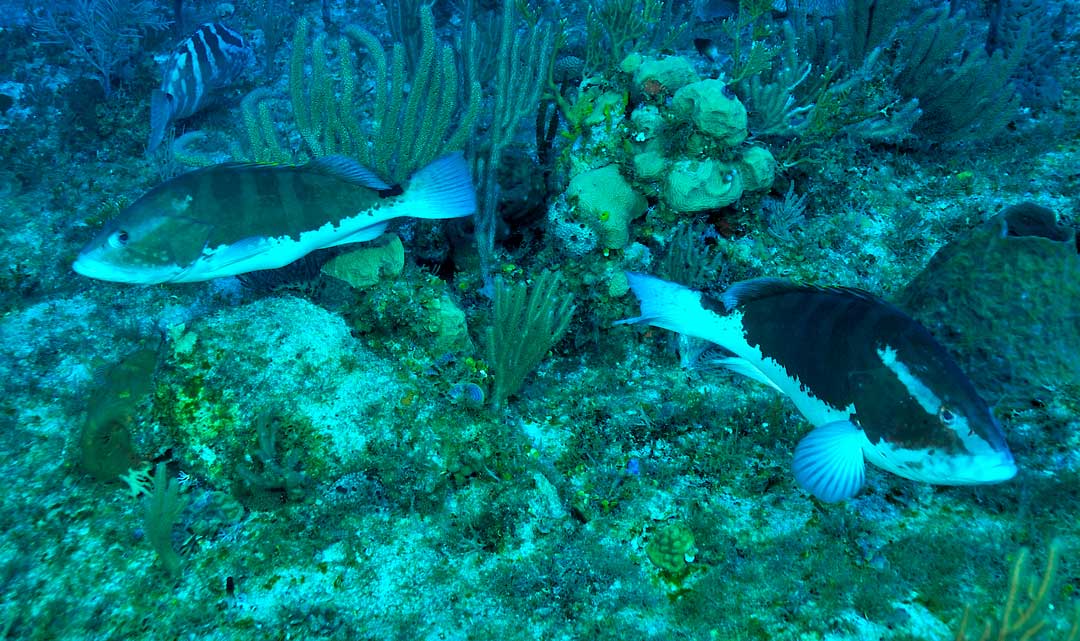
Nassau groupers in spawning colours. Photo © Keith Pamper
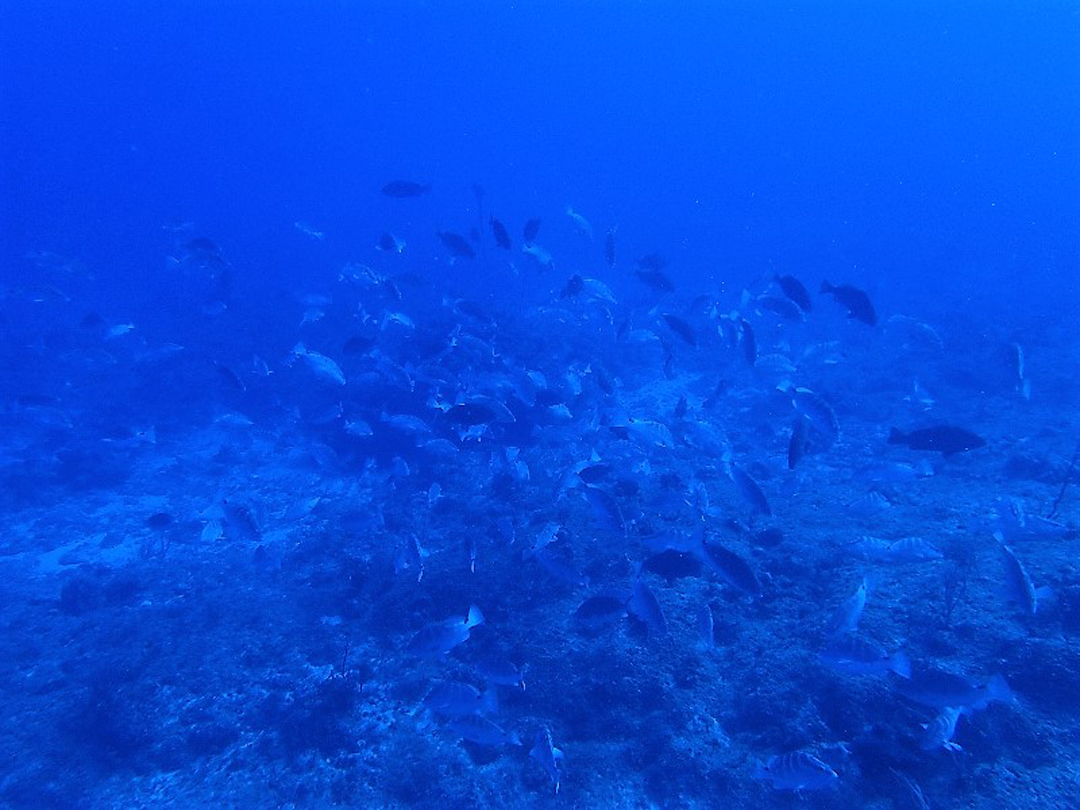
Aggregating Nassau groupers. Photo © Craig Dahlgren
However, studying a species that chooses to reproduce in winter has its challenges. Cold fronts from the north move through The Bahamas and are associated with occasional showers, strong winds, rough seas and decreased water temperatures. In December, our Long Island trip was delayed by two days because of bad weather, but we were fortunate and had amazing weather after that. Over the course of three days we completed 15 spawning aggregation survey dives, surgically implanted 19 Nassau groupers with acoustic transmitters and tagged them externally with colour-coded Floy™ tags, measured and collected DNA samples from 23 groupers, and obtained bathymetry data from spawning sites. Mostly a successful December!
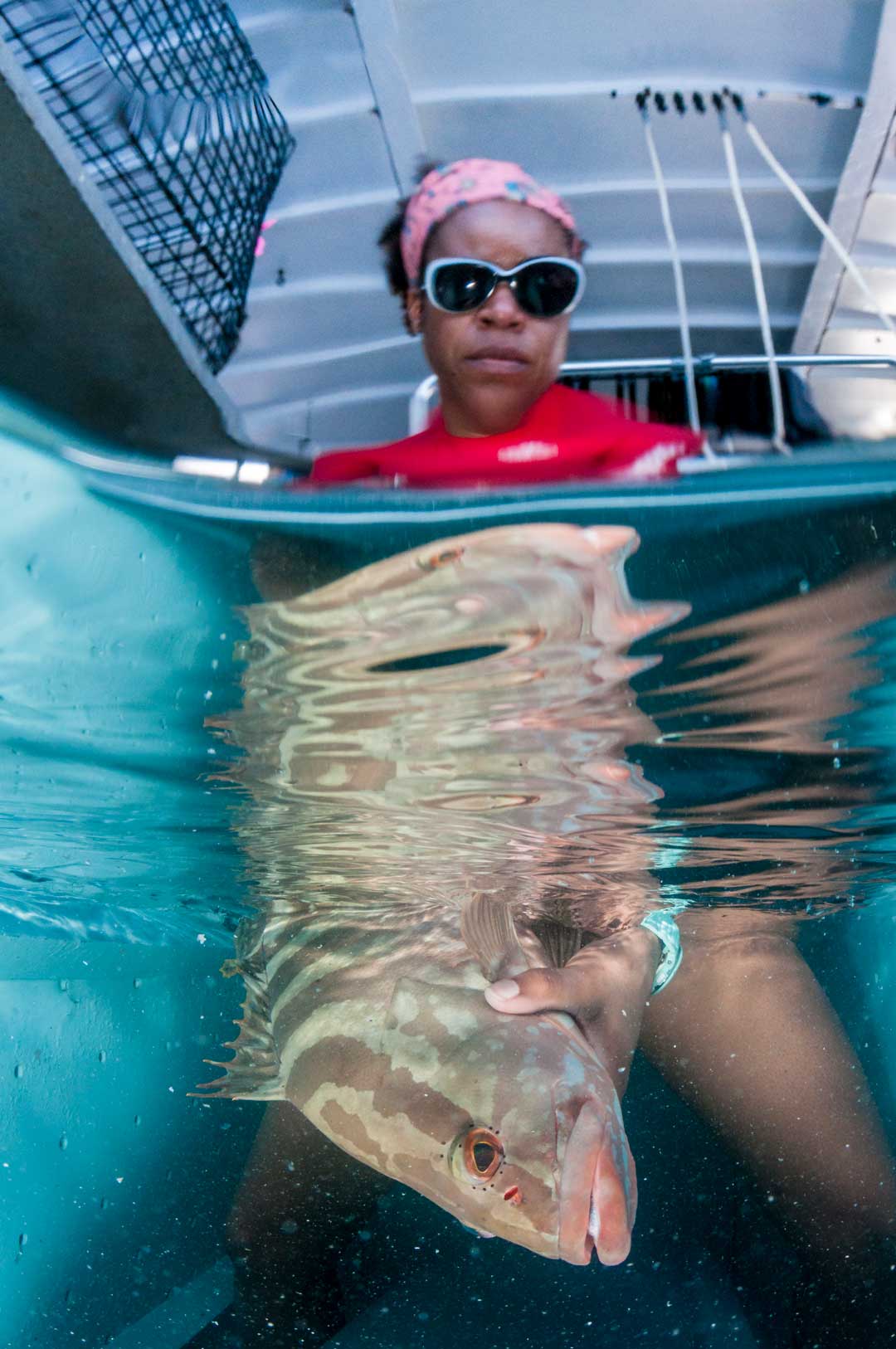
Krista transfers a Nassau grouper into the live-well for recovery. Photo © Shane Gross
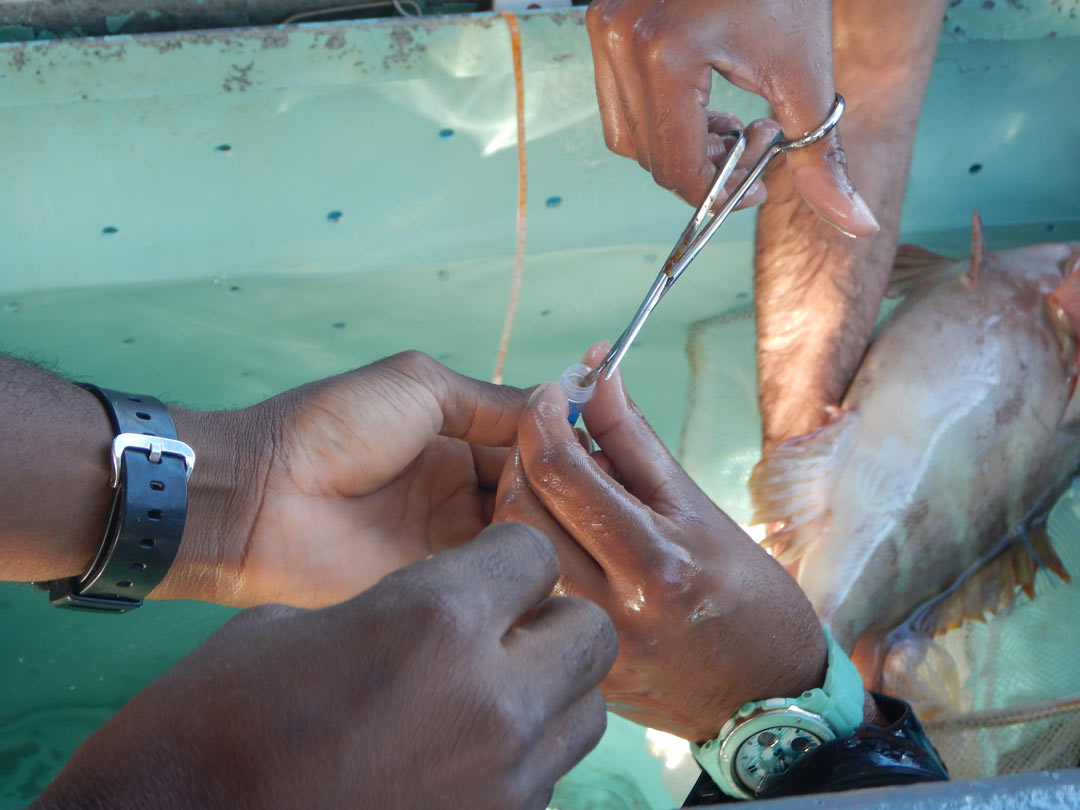
Collecting a fin clip sample for genetic analysis. Photo © Krista Sherman
Mother Nature had different plans for January. Wind gusts of over 30 knots kept us tied to the dock in Nassau for two days before we were finally able to leave. With a research boat full of eager and slightly seasick volunteers, we got on site and squeezed in 2½ days of field work in Eleuthera. Unfortunately we weren’t able to complete multiple survey dives, but that’s the nature of field work. Amazingly, though, we were able to process (measure, DNA sample and Floy™ tag) and release 27 fishes, deploy two drifters and conduct a bathymetry survey of the site.
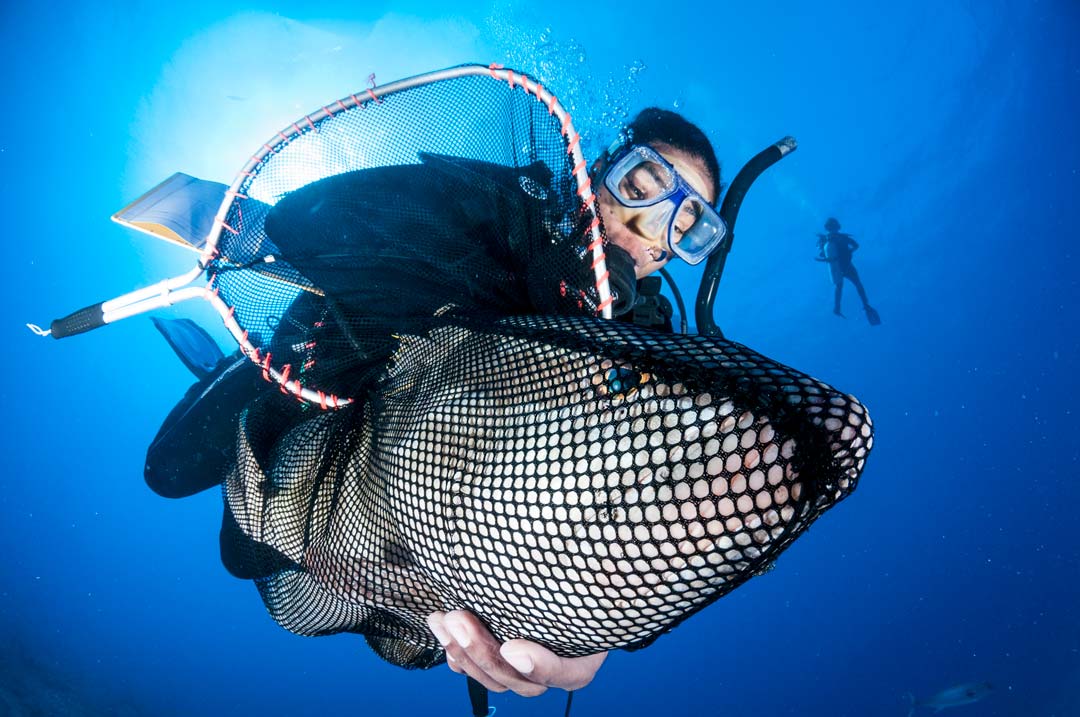
Krista escorts a Nassau grouper back to the spawning site. Photo © Shane Gross
The past three years have been challenging and adventurous. Now it’s time to delve deeply into all the data to see how successful these big bangs have been!
Keep up with the latest research news via Nassau Grouper 242 Facebook and Instagram.
